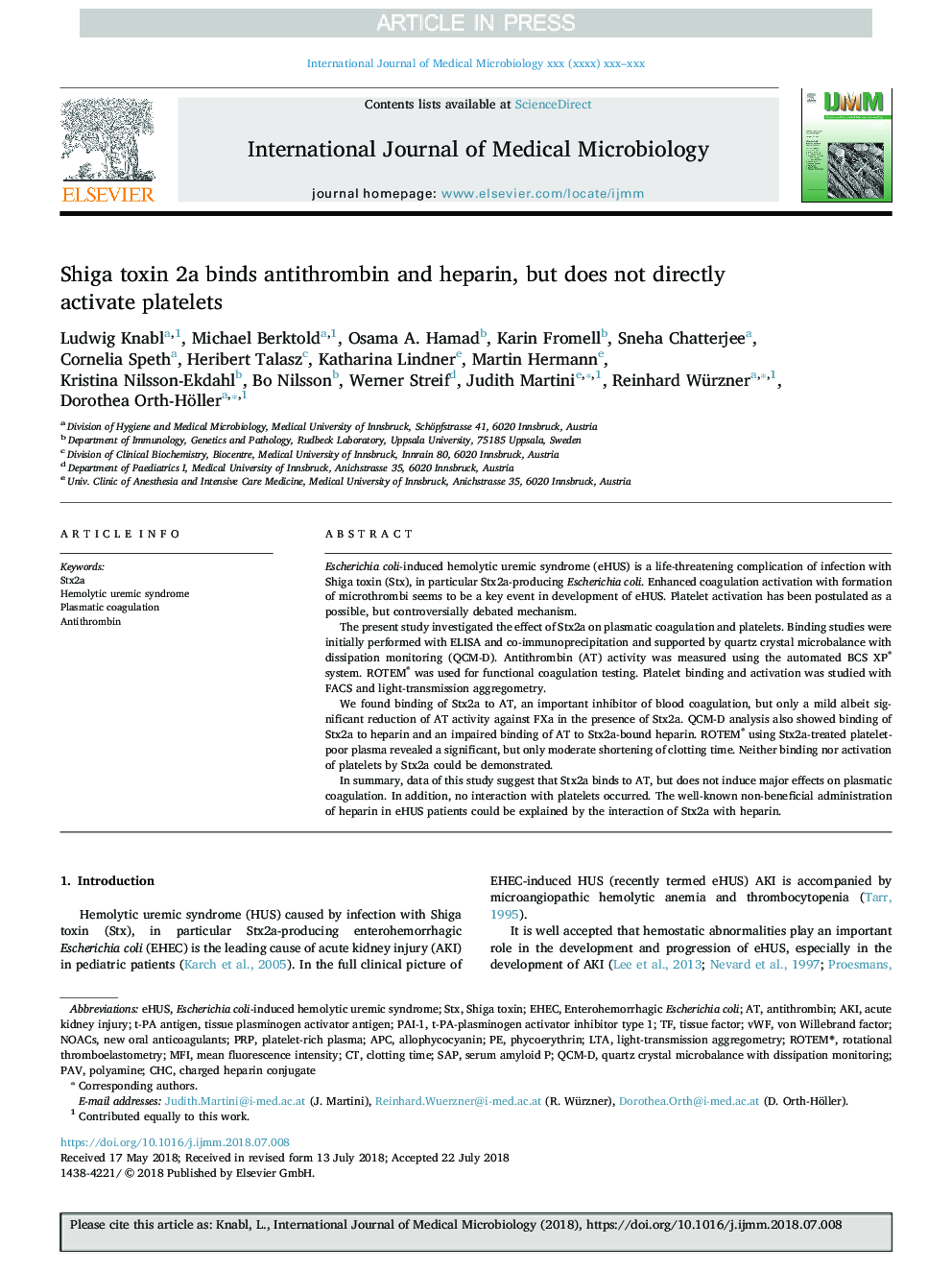| Article ID | Journal | Published Year | Pages | File Type |
|---|---|---|---|---|
| 10157239 | International Journal of Medical Microbiology | 2018 | 8 Pages |
Abstract
In summary, data of this study suggest that Stx2a binds to AT, but does not induce major effects on plasmatic coagulation. In addition, no interaction with platelets occurred. The well-known non-beneficial administration of heparin in eHUS patients could be explained by the interaction of Stx2a with heparin.
Keywords
MFIAKIQCM-DSTXvWFNOACsCHCPAI-1EHECLTAAPCPaVPrPEnterohemorrhagic Escherichia coliacute kidney injuryallophycocyaninantithrombinRotational thromboelastometryClotting timeSerum Amyloid PShiga toxinHemolytic uremic syndromeSAPnew oral anticoagulantsTissue factorVon Willebrand factorquartz crystal microbalance with dissipation monitoringphycoerythrinmean fluorescence intensityplatelet-rich plasmaPolyamine
Related Topics
Life Sciences
Biochemistry, Genetics and Molecular Biology
Biochemistry, Genetics and Molecular Biology (General)
Authors
Ludwig Knabl, Michael Berktold, Osama A. Hamad, Karin Fromell, Sneha Chatterjee, Cornelia Speth, Heribert Talasz, Katharina Lindner, Martin Hermann, Kristina Nilsson-Ekdahl, Bo Nilsson, Werner Streif, Judith Martini, Reinhard Würzner,
